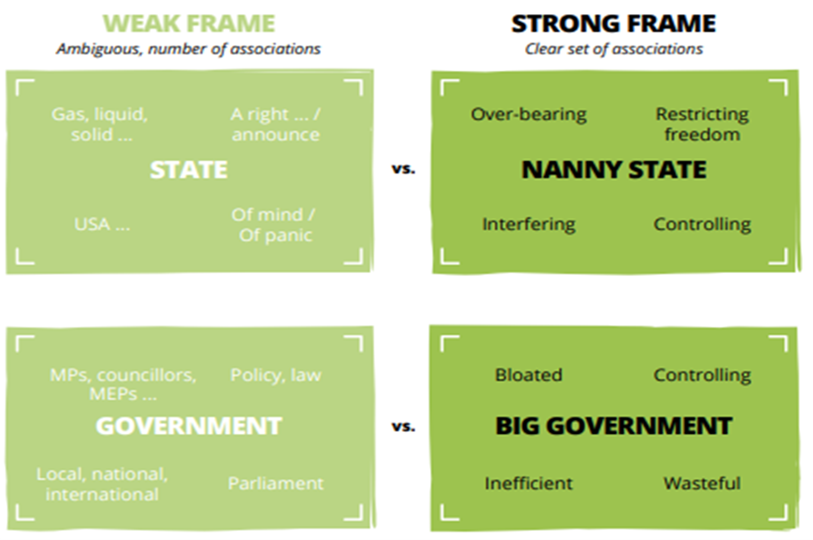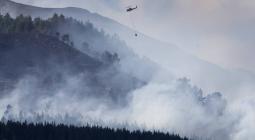Greening Our Language

What is the power of our words and how can we harness their power to create a better world for wildlife?
Many of us will have heard the old adage of ‘Sticks and stones may break my bones but words will never harm me’. It’s an English language children’s rhyme that made its first published appearance in the 1844 book, Eothen, by the English travel writer and historian Alexander William Kingslake1. Many children (including my own), parents and educators would disagree with Kingslake on the hurt or harm that can be caused by words alone and there is research to suggest that our use of language can be a powerful tool in shaping our experiences in and responses to nature.
According to Robin Sharma, a Canadian author, “words can inspire and words can destroy’”. He invites his readers to choose their words well. Whilst Gemma Troy2, an Australian poet who accompanies her verses with collected nature keepsakes from the outdoors, encourages us to “Remember your words can plant gardens or burn whole forests down”.
The Intergovernmental Panel on Climate Change (IPCC), set up in in 1988 as an intergovernmental body of the United Nations and dedicated to providing the world with objective scientific information on climate change, have made clear the implications of our modern lifestyle and the future risks ahead. Their 2019 special report on ‘Climate Change and Land’3 re-iterated that climate change has adversely impacted food security and terrestrial ecosystems, contributed to land degradation and desertification, has increased the frequency, intensity and duration of heat related events and the frequency and intensity of droughts in some regions.
Our children are growing up facing a very difficult truth. They are hearing more and more, through the many media avenues that are available to them in our digital era, about the impacts of climate change and ecological destabilisation bought about from human activities. This knowledge of a dire future is already having an impact on mental health with the Climate Psychology Alliance (CPA) reporting a spread of climate anxiety that is reaching therapists’ consultation rooms, with reported feelings of despair, anger and grief4.
The Independent newspaper5 reported that some experts consider collective action, the development of a sense of agency in young people, to be reducing climate anxiety mental health symptoms. It included a contribution from Alison Roy (from the Association of Child Psychotherapists), suggesting that youth activism can counteract children’s sense of powerlessness in this situation. However, it can sometimes feel as if activism is hard to build into our already cramped curriculums and school days. Is there a way to use our everyday communications in the classroom to help wildlife and support the eco-anxious?
Here’s how, as educators, we might be able to use our words more effectively:
The Public Interest Research Centre (PIRC – an organisation who work to help equality, anti-oppression and environmental justice movements) are here to help! In 2018 The PIRC published a free toolkit on framing nature6. It’s a highly practical guide on just how we might use our words to help. The toolkit is a collaboration between some of the UKs best loved environmental organisations: The Wildlife Trust, RSPB, Fresh Water Habitats Trust and Zoological Society London (ZSL).
Readers are invited to connect to the concept of ‘framing’. The notion that related bits of information are stored in our memories to form mental structures. Structures that can be evoked by a single word/phrase or even an image, structures that carry a clear set of associations and implications for how we view the world. Our ‘frames’ organise our reality, with commonly occurring frames becoming normalised and sometimes embedded as our common sense. All words and phrases are embedded in frames with different strengths in their associations. This helpful example helps us to consider the difference between weak and strong frames:

It’s important to realise that we are constantly framing things in our classrooms and that our word choices have implications. We can switch on certain links and beliefs, instead of others, which can be helpful or harmful in our work to educate for the environment. The linguist George Lakoff, in his 2010 paper in Environmental Communication7, explores why it matters how we frame the environment. Lakoff draws our attention to the ubiquity of environmental framing in the news and makes the connection between frame-circuits and the emotional regions of our brains, the “inescapable part of normal thought” that enables us to be rational and make meaning. Using a frame of negation can also, perhaps unintentionally, activate a frame. For example, Lakoff cites President Nixon’s 1973 Watergate denial, when stating “I am not a crook” as leading people to think of him as just that: a crook.
It’s crucial, when we contemplate frames for environmental education, that we consider what is already in people’s heads. The difference between farming and agriculture could be a useful starting point. PIRC (2018) highlight that farming is commonly framed by a jolly farmer, a small hold of happy animals and children’s books with colourful tractor scenes. So, when climate issues arising from farming are discussed we bring to mind happy grazing cows and butter churning. PIRC (2018, p14) suggest that an alternative term, to envision appropriate images of the impacts of modern farming, might be ‘industrial agriculture’ or ‘industrialisation of the countryside’ and they invite toolkit readers to have a quick game of Pictionary with 60 seconds to draw (with no letters or symbols allowed) the word “biodiversity” and then repeat the exercise for the word “wildlife”, then compare the outcomes. How are they different?
It would be useful for educators to consider the frames they use most commonly at work, perhaps by thinking about the environmental knowledge/issues they teach most frequently and mind-mapping the word associations that come with them, as well as the terms immediately related to them. You could try repeating the Pictionary exercise to reveal associations that don’t at first reveal themselves.
PIRC (2018) also recommend appointing a jargon advisor, a friend or family member who doesn’t know a lot about environmental education, as a subject to test your education messages on. Invite them to highlight anything that they don’t understand and ask them to repeat what you have shared. If they don’t understand then you can change it! What they really hear is paramount!
The common traps the PIRC (2018) advise against, in our environmental communications, are to not overdo threat, to demonstrate your passion, to highlight the intrinsic value of nature and avoid making nature a victim (instead try giving nature an active role in your frames, nature does amazing things that please and surprise us). Try to ensure that the problem AND the solutions are made clear, this may make learners more likely to want to take action and help prevent anxiety.
It is essential, when we are talking about nature, that we use frames that include us as being part of nature, that show that nature is not a transactional product or a barrier to be overcome. You should avoid using an exclusively scientific frame when talking about nature, there are many other forms of appreciation e.g. art, music, design. Many other ways to demonstrate our love of nature and our emotions about nature.
We can avoid the Nixon ‘Well, I’m not a crook’ frame of negation by identifying harmful phrases and devising alternatives. PIRC (2018, p24) share an example:
Don’t say: ‘Wind Turbines aren’t noisy.’
Instead say: ‘Modern wind turbines are graceful and quiet.’
When we are using images in our classrooms it’s important to have people in the picture. Images of nature without humans can seem distant and unrelatable, something immaculate and separate from mankind. It’s useful to remember that what the people in your images are doing and even what they are wearing can affect the message they infer. Your picture implies who nature is for and what they should do with it.
We are facing some very serious, existential, threats and whilst we should not shy away from sharing with our learners but we also need to be aware of the danger of apocalypse fatigue and disaster paralysis. PIRC suggest using powerful positive images alongside those we are showing of threats and to make the positive image larger to help highlight the wonder of what is at stake.
The UK is one of 193 countries who have committed to delivering the United Nations Sustainable Development Goals (UN SDGs) by 2030. A collection of 17 goals developed to address the global challenges we face, including those related to poverty, inequality, climate change, environmental degradation, peace and justice. Goal 4 of 17, with ten collective sub-targets, is known as ‘Quality Education’. It seeks to “Ensure inclusive and equitable quality education and promote lifelong learning opportunities for all”8. These goals offer a powerful tool for activism that can help us protect the physical and mental well-being of future generations.
Target 4.7 ‘Education for Sustainable Development and Global Citizenship’ asks that by 2030 we: Ensure that all learners acquire the knowledge and skills needed to promote sustainable development, including, among others, through education for sustainable development and sustainable lifestyles, human rights, gender equality, promotion of a culture of peace and non-violence, global citizenship and appreciation of cultural diversity and of culture’s contribution to sustainable development (UN, 2015). The right frames can help us promote sustainable lifestyles to our learners and support their mental health.
The way we envision the environment, the way we frame it, has significance. Whether our position is one of ‘saviour’ to the victim of nature or as ‘dominator’ of a nature to be exploited, with each affecting how we conduct ourselves in and towards nature. Dr Nadine Andrews (2013)9, a visiting researcher at Lancaster University, has explored cognitive frames in her research and discovered that the concept of nature as a container is extremely common. The notion of nature being something, contained somewhere, distant from our daily existence. Dr Andrews suggests that a mindful connection to nature requires a shift in our thought systems, away from containers and boundaries, an object or a place, to connecting with our inner nature with ourselves as nature to enable us to connect and exist in harmony with the rest of nature. Our work with words can help secure that connection.
* Elena Lengthorn, Senior Lecturer in Teacher Education, University of Worcester
…………………………………….
References:
1. Oliver, J. (1844) Eothen; or Traces of travel brought home from the East. London.
2. Troy,G. (2018). Heart Lines. Andrews McMeel Publishing.
3. IPCC special report on ‘Climate Change and Land’, 2019 (p5). ipcc.ch/srccl
4. CPA (2016). Facing Difficult Truths, CPA, What we do. tinyurl.com/taos4c3
5. Busby, E. (28th November, 2019). Climate change activism ‘reducing mental health symptoms among young people’. The Independent. tinyurl.com/tavycha
6. PIRC (2018). Framing Nature Toolkit – A guide to how words can help wildlife. Public Interest Research Centre.
publicinterest.org.uk/nature-toolkit
7. Lakoff, G. (2010). Why it matters how we frame the environment. Environmental communication, vol 4, No. 1, March 2010 pp.70-81. tinyurl.com/uex56k3
8. United Nations (2015). The Global Goals for Sustainable Development. United Nations tinyurl.com/sojr6u8
9. Andrews, N. (2013). Nature: container, object, person, self? Common Cause Foundation tinyurl.com/yx7b7lkb
…………………………………….
This article was first published in 2020 in Vol 123 of the NAEE journal which is available free to members. This edition had a biodiversity theme.
naee.org




